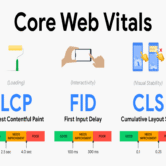
From Click to Convert: Optimizing Your Web Payment Funnel
A well-optimized web payment funnel is essential for turning user intent into successful transactions. From the moment a visitor clicks to purchase, every step in the process must be streamlined, intuitive, and free of unnecessary friction. The funnel should guide users through cart review, checkout selection, payment input, and confirmation with minimal effort. Each element must serve a purpose, supporting decision clarity, trust signals, and transaction flow without distraction or delay.
Key strategies for optimization include reducing form fields, enabling guest checkouts, and implementing auto-fill capabilities that leverage saved data. Speed and simplicity are critical, and features like real-time validation, error feedback, and visible progress indicators help reinforce a sense of control. Additionally, integrating multiple payment methods—including cards, wallets, and bank transfers—ensures broader accessibility. All design choices should support mobile responsiveness, ensuring the funnel performs consistently across screen sizes and device types.
To refine the funnel continuously, teams should implement conversion tracking, drop-off analysis, and A/B testing to identify where users hesitate or exit. Metrics such as completion time, field abandonment, and retry rates offer valuable insight into user behavior and bottlenecks. By focusing on iterative improvements and data-driven decisions, businesses can transform their payment journey from a transactional checkpoint into a seamless user experience that promotes completion, satisfaction, and repeat engagement.





